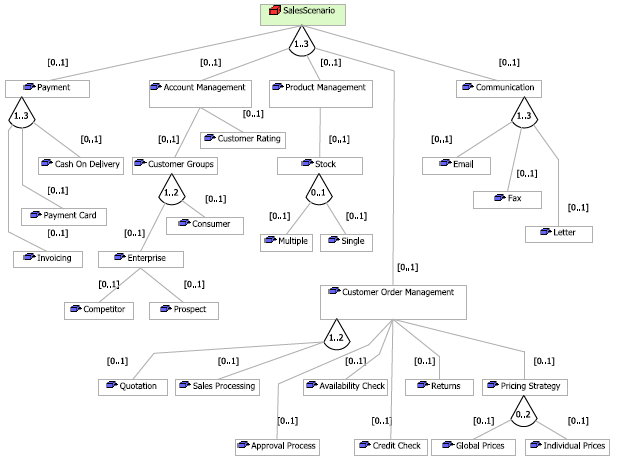
|
Forschungsprojekt feasiPLeFeature-getriebene, aspektorientierte und modellgetriebene Produktlinienentwicklung |
|
Overview Description Architecture Partners Publications Workshop Imprint |

|
Case Study: Sales Scenario
The Sales Scenario is a model-driven software product line, which is used as case study in the research project feasiPLe. Our goal is to perform the stepwise procedure of creating a software product line with a combination of model-driven, aspect-oriented and product line technologies. With this case study, we want to demonstrate the feasibility of this combined approach and the whole development concept of feasiPLe. The here presented case study will be used to evaluate the tools and concepts we are developing within our research project. Our vision is to provide an end-to-end tool chain for SPLE, from feature description to implementing code.
Platform and Technologies
- Java 2 Enterprise Edition
- Enterprise JavaBeans Technology - EJB 3.0
- JBoss Seam
- Persistence Framework: Hibernate
Business Domain and Feature Model
Main purpose of the Sales Scenario is the holistic management of business data, including central storage and access controlled retrieval. It focuses on product sales processes, where the core features comprise: Customer Order Management, Payment, Account Management, Product Management and Communications. These features are depicted in the case study’s feature model in Fig.1, created with an Eclipse-based feature modeling tool developed by Christian Wende et al. from Dresden University of Technology, Germany. The feature notation relates to the original FODA notation but is purely cardinalitybased and abstains from the original, often confusing bubble syntax.

Fig. 1: The Sales Scenario's feature model
To give you a better understanding of the Sales Scenario's complexity and scale, we prepared a screencast for you.